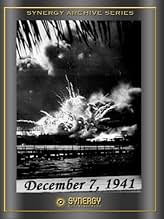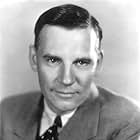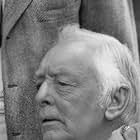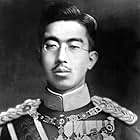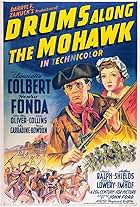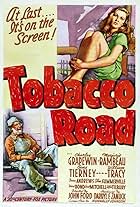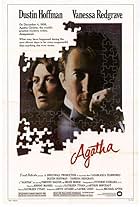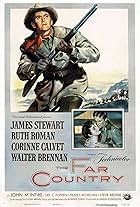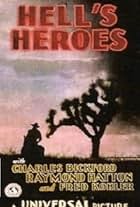"Docudrama" about the bombing of Pearl Harbor on December 7th, 1941 and its results, the recovering of the ships, the improving of defense in Hawaii and the US efforts to beat back the Japan... Read all"Docudrama" about the bombing of Pearl Harbor on December 7th, 1941 and its results, the recovering of the ships, the improving of defense in Hawaii and the US efforts to beat back the Japanese reinforcements."Docudrama" about the bombing of Pearl Harbor on December 7th, 1941 and its results, the recovering of the ships, the improving of defense in Hawaii and the US efforts to beat back the Japanese reinforcements.
- Won 1 Oscar
- 1 win total
- Narrator
- (voice)
- (as James K. McGuiness)
- Shinto Priest
- (uncredited)
- Self
- (uncredited)
- Reporter
- (uncredited)
- Wounded Officer
- (uncredited)
- Self
- (archive footage)
- (uncredited)
- Self
- (uncredited)
- Self
- (uncredited)
- Self
- (uncredited)
- Self
- (uncredited)
- Hawaiian Boy
- (uncredited)
- Pvt. Joseph L. Lockhart
- (uncredited)
- Directors
- Writer
- All cast & crew
- Production, box office & more at IMDbPro
Storyline
Did you know
- TriviaTurner Classic Movies showed the original uncut "censured" version of this movie on 15 September 2015. During the introduction with Ben Mankiewicz and Mark Harris, one of many reasons why the movie was censored was in 1943 it was considered too racist against the Japanese.
- GoofsShowing the events of the Sunday morning attack, the priest at Mass (at Kaneohe, I believe) announces incorrectly that it is the 1st Sunday of Advent. Actually it was the 2nd Sunday of Advent.
- Quotes
World War I Ghost Soldier: Six will get you twelve that fifteen to twenty years from now they'll be opening up new sectors in here.
- Crazy creditsThe War and Navy Departments, producers of the movie, are credited orally by a narrator.
- Alternate versionsSpecial 50th anniversary edition on video released in 1991 is restored to 82-minute length with subtitles added to Japanese language sequences and a descriptive prologue added. The 1943 version was a completely censored 34-minute version with the full version being banned by the US government for being damaging to morale.
- ConnectionsEdited into Task Force (1949)
- SoundtracksColumbia, the Gem of the Ocean
Written by David T. Shaw
Arranged by Thomas A. Beckett
Played as background music often
The film begins with the embodiment of Uncle Sam (Walter Huston) meeting up with an old guy (the familiar character actor, Harry Davenport). What follows is a history lesson concerning Hawaii (particularly focusing on Hawaiians of Japanese descent) and account of the surprise Japanese attack on Pearl Harbor which is narrated by Sam. Interestingly, Uncle Sam talks on and on about how these Japanese-Americans are very loyal to America and Davenport (usually such a nice guy in films) goes on to question their loyalty and their 'so called religion called Shinto'! Interestingly, Davenport's attitude about these people is pretty much in line with the government policy of internment of Japanese-Americans following the December 7th attack. And, very oddly, Uncle Sam is seen as naive and perhaps a little stupid. What follows is a lot of dry narration and, finally, an odd scene between dead soldiers (one of which id Dana Andrews).
So why did the government dislike the film? First, although being anti-Japanese was encouraged, the original version basically said that beneath their veneer, many Japanese-Americans were evil agents working for Japan--and that Uncle Sam (i.e., the US government) had been naive and complacent. Second, when it came to the surprise attack, the original film said that we SHOULD have been ready and led credence to conspiracy theories that the government knew or should have known about the attack. As a result, of both themes, the film came off like an indictment of the government and instead of instilling patriotism, it might have instead served to create a defeatist and anti-government attitude. I can see why the film was re-made and edited.
Sure it was filled with very nasty anti-Japanese material...but was it well made? What about the technical merits of the film? I don't really think it was made well. Much of the film needed tightening. For example, the Japanese montage just went on too long. Additionally, as I mentioned above, the film was not at all successful in conveying what the government wanted--a HUGE drawback. Its nasty tone really represents negative propaganda and I fully understand the need to re-do this picture. Still, very interesting and an unusual insight into the sorts of feelings brewing in America at the time. Probably mostly of value to historians today and I am glad it is finally available-- politically correct or not!
By the way, it IS true that many of the ships sunk at Pearl Harbor were actually repaired and recommissioned. I am not sure whether or not the US government wanted this to be known or not. I could see an advantage for not letting the enemy know this or the benefit of letting the civilians know we are resilient.
- planktonrules
- Sep 14, 2015
- Permalink
Details
- Runtime1 hour 22 minutes
- Color
- Sound mix
- Aspect ratio
- 1.37 : 1
Contribute to this page


